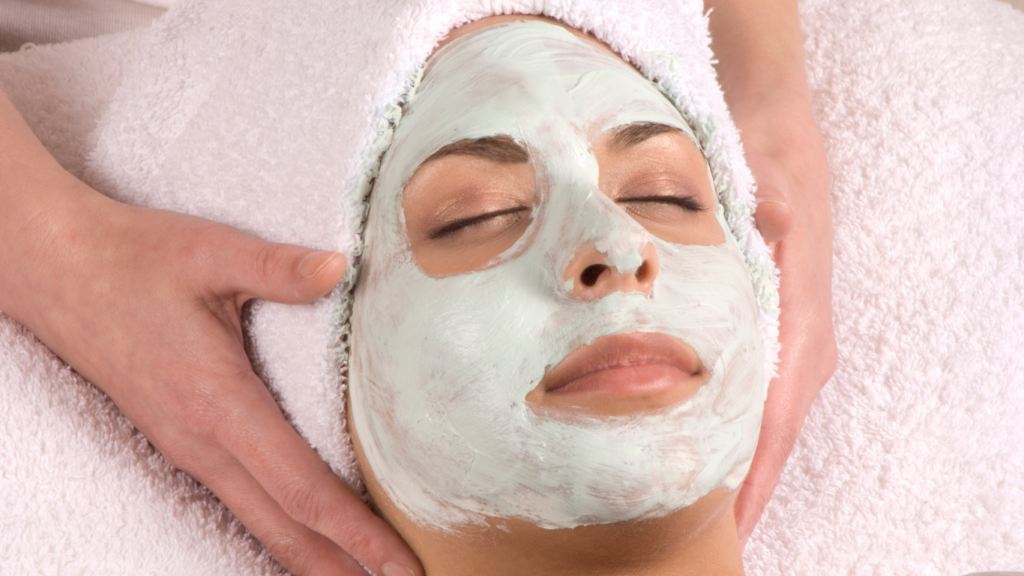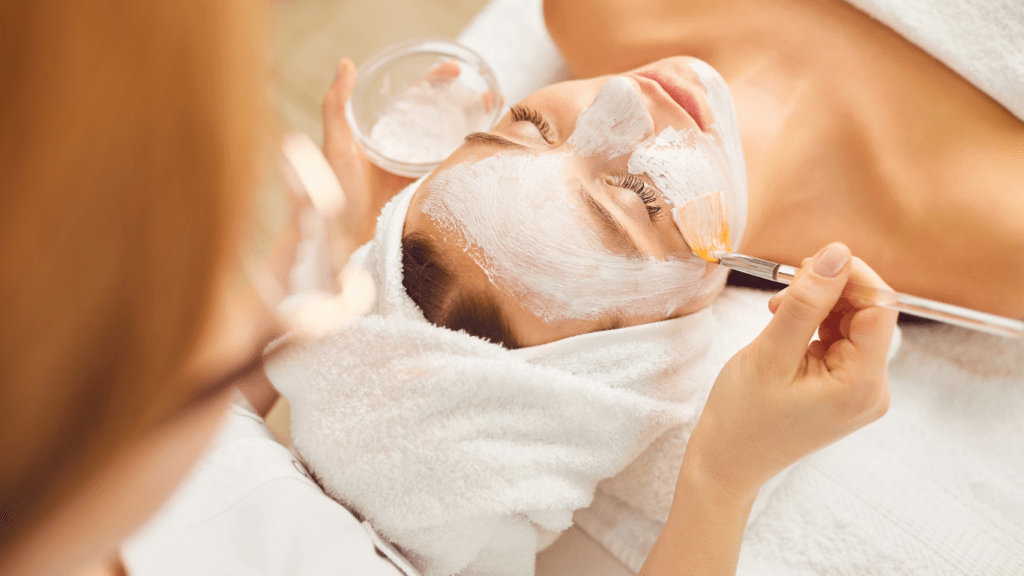Understanding Ayurvedic Beauty
Ayurvedic beauty focuses on the synergy between physical and mental well-being to achieve radiant skin and a healthy body. This holistic approach, rooted in ancient Indian medicine, emphasizes individualized care. Practitioners assess unique body constitutions, known as doshas—Vata, Pitta, and Kapha—to tailor treatments.
My understanding is that Ayurveda believes beauty originates from within. It targets the root causes rather than masking symptoms. Internal health directly influences external appearance. Clear skin and lustrous hair stem from balanced nutrition, adequate sleep, and stress management.
Herbs play a significant role in Ayurvedic beauty practices. Ingredients like turmeric, neem, and aloe vera are known for their healing properties. For instance, turmeric’s anti-inflammatory effects help soothe skin irritations. Neem’s antibacterial properties combat acne, while aloe vera’s moisturizing traits enhance skin elasticity.
Incorporating daily rituals is key. I recommend practices such as oil pulling, using coconut or sesame oil to detoxify; abhyanga (self-massage) to improve circulation and hydrate the skin; and herbal face masks tailored to one’s dosha. These not only benefit the skin but also foster mindfulness.
Eliminating toxins is central to Ayurvedic beauty. Dietary choices, detoxing teas, and seasonal cleanses help maintain internal harmony. Ingesting foods appropriate for your dosha enhances digestion, boosts energy, and reflects positively on the skin.
Ayurvedic beauty is an intricate system interlinking herbs, personalized care, and consistent rituals. It provides natural pathways to glowing skin and well-being, advocating beauty as a holistic journey.
Historical Origins of Ayurvedic Practices
Ayurveda, one of the world’s oldest healing systems, has roots in ancient India. It evolved over thousands of years, integrating wisdom from various texts, practices, and continuous adaptations.
Ancient Texts and Scriptures
The foundational texts of Ayurveda are the Vedas, written around 1500 BCE. These scriptures include:
- Rigveda: Offers hymns and mantras that reference medicinal plants and their uses.
- Atharvaveda: Contains detailed descriptions of diseases, treatments, and surgeries.
Sushruta Samhita and Charaka Samhita are key texts written later:
- Sushruta Samhita: Focuses on surgical techniques and anatomy.
- Charaka Samhita: Covers internal medicine, emphasizing prevention and treatment.
Evolution Over Millennia
Ayurveda didn’t remain static; it evolved based on new findings. Over millennia, scholars and practitioners expanded the body of knowledge:
- Gupta Period (320-550 CE): Marked significant advancements in Ayurvedic surgery and treatments.
- Medieval Period: Integration of influences from Unani and other regional medicine systems.
- Modern Era: Renewed interest led to research and global spread of Ayurvedic practices.
Technological advancements and global communications now allow for blending ancient wisdom with modern science, making Ayurveda more accessible and relevant today.
Key Principles of Ayurvedic Beauty

Ayurvedic beauty taps into ancient wisdom to offer practices that enhance modern wellness. It focuses on harmonizing the body’s natural energies, known as doshas, and leveraging the benefits of natural ingredients.
Doshas and Their Importance
In Ayurveda, doshas—Vata, Pitta, and Kapha—are fundamental energies that govern physical, mental, and emotional well-being. Each individual has a unique composition of these doshas, which influences their skin type and health needs. Understanding your dominant dosha helps personalize beauty routines:
- Vata (Air and Space): Tends to have dry, sensitive skin. Balancing Vata involves hydration and nourishment through oils like sesame or almond.
- Pitta (Fire and Water): Often has sensitive, acne-prone skin. Cooling and calming ingredients like aloe vera can help.
- Kapha (Earth and Water): Typically has oily, thick skin. Stimulating and purifying products like neem are beneficial.
Natural Ingredients and Their Benefits
Ayurvedic beauty relies on natural ingredients to promote healthy skin. These components are chosen for their medicinal properties, which nourish and heal:
- Turmeric: Known for its anti-inflammatory and antioxidant properties, turmeric helps reduce redness and protect the skin from damage.
- Neem: With antibacterial properties, neem is effective in treating acne and purifying the skin.
- Aloe Vera: Soothes and hydrates, making it ideal for sensitive or irritated skin.
- Sandalwood: Offers a cooling effect and reduces inflammation.
- Rose Water: Tones and calms the skin with its gentle, hydrating properties.
These principles form the core of Ayurvedic beauty, integrating natural balance and plant-based ingredients for holistic wellness.
Ayurvedic Skincare Techniques
Ayurvedic skincare techniques offer holistic solutions that focus on nurturing both skin and spirit. These methods adhere to ancient principles, yet seamlessly integrate into modern wellness routines.
Daily Routines
Daily routines form the cornerstone of Ayurvedic skincare. Abhyanga, the practice of self-massage with warm oil, boosts circulation and nourishes the skin. I use oils like sesame or coconut, selected based on my dosha, to restore balance.
Another essential routine is oil pulling, which involves swishing oil in the mouth to remove toxins. This not only enhances oral health but also impacts my overall complexion. In the morning, I cleanse my face with a herbal mixture of gram flour and turmeric, which gently exfoliates and brightens the skin.
Herbal face masks are pivotal in Ayurvedic daily routines as well. I often use a blend of neem, sandalwood, and rose water to detoxify and rejuvenate my skin. These herbs offer anti-inflammatory and cooling properties, particularly beneficial for Pitta dosha.
Specialized Treatments
Specialized treatments target specific skin issues, ensuring a tailored approach to beauty. Shirodhara, where warm herbal oil is poured over the forehead, alleviates stress and promotes radiant skin. This treatment is highly effective for balancing Vata dosha.
Similarly, Panchakarma, a thorough detoxification process, removes deep-seated toxins. I undergo this treatment seasonally for optimal results. Panchakarma supports the body’s natural cleansing processes and visibly improves my skin’s texture and glow.
Nasya, the practice of administering herbal oils into the nostrils, clarifies my senses and complexion. It promotes the removal of accumulated doshas, especially beneficial for Kapha types.
These Ayurvedic skincare techniques, rooted in tradition, offer a sustainable pathway to achieving healthy and vibrant skin. By incorporating these practices, I’ve found that my skin’s natural balance and radiance are significantly enhanced.
Ayurvedic Hair Care Methods
My experience with Ayurvedic hair care reveals its transformative benefits, emphasizing natural ingredients and time-tested techniques to nurture healthy hair and scalp.
Herbal Oils and Their Uses
Herbal oils play a pivotal role in Ayurvedic hair care. Bhringraj oil strengthens hair follicles and reduces hair fall. Amla oil, rich in vitamin C, boosts hair growth and imparts shine. Brahmi oil soothes the scalp and enhances hair thickness. Neem oil combats dandruff and prevents scalp infections. Coconut oil, often used as a base, moisturizes and provides essential fatty acids.
Ayurvedic Hair Masks
Ayurvedic hair masks utilize potent herbs and natural substances. Shikakai powder cleanses and conditions hair, maintaining scalp health. Fenugreek seeds, when soaked and ground, help treat dandruff and hair thinning. Hibiscus flowers strengthen hair roots and add luster. Aloe vera gel, mixed with lemon juice, acts as a soothing conditioner. Henna not only provides natural coloring but also strengthens and repairs hair.
Modern Applications of Ayurvedic Beauty
Modernity and tradition may seem worlds apart, but Ayurvedic beauty practices have seamlessly integrated into contemporary routines, providing a bridge between ancient wisdom and today’s needs.
Integration with Contemporary Products
Ayurvedic ingredients are now key components in many skincare and haircare products. Brands incorporate herbs like turmeric, neem, and aloe vera into formulations, enhancing the efficacy of cleansers, moisturizers, and hair conditioners. You’ll find serums containing saffron for brightening, face masks harnessing the detoxifying properties of clay, and shampoos enriched with Bhringraj and Amla for hair strength. This fusion makes Ayurvedic benefits accessible while maintaining convenience.
Benefits for Modern Lifestyles
Adopting Ayurvedic beauty practices complements the fast-paced modern lifestyle. These rituals promote mindfulness and self-care, counteracting the effects of urban stress and pollution. Practices like oil pulling and abhyanga (self-massage) fit easily into daily schedules, offering profound skin benefits and relaxation. By leveraging Ayurvedic routines, such as seasonal detoxes and personalized dosha-based care, one achieves not only radiant skin but also balanced mental well-being. Combining these practices with modern products amplifies overall health, beauty, and harmony.



